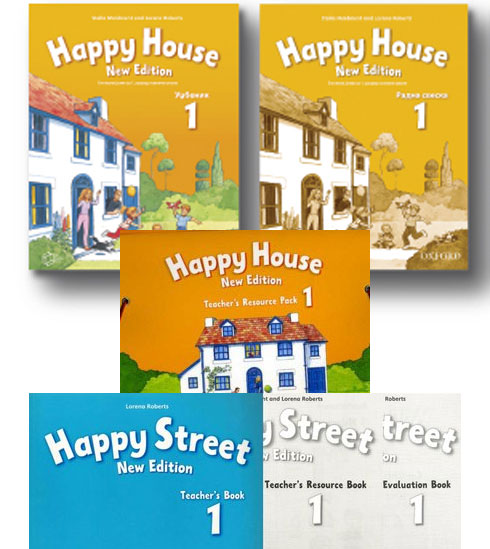Happy House 1 Activity Book Free Download

Mar 3, 2016 - book used in primary schools for english classes. 1 E Sing the song.  Street 2 Happy Earth 1 Happy Earth 2 Happy Street Components Class Book Activity Book _ __ ___ »_fl—r* Q; Cassettes / Audio cos l _.
Street 2 Happy Earth 1 Happy Earth 2 Happy Street Components Class Book Activity Book _ __ ___ »_fl—r* Q; Cassettes / Audio cos l _.
• Stella Maidment and Lorena Roberts Evaluation Book • Contents Introduction....4Unit tests.... 6Skills test (Listening)... 13Skills test (Speaking)...14Answer key and audio scripts.. 15Evaluation grids...
18Evaluation sheet... 23 • IntroductionThe Happy House Evaluation Book provides different ways of evaluating children's progress, through ongoing assessment, children's self-assessment, language portfolio suggestions, and formal testing. 1 Classroom evaluationOngoing classroom evaluation is key to assessing children's progress. This can be achieved in a number of ways. MonitoringWhen children are engaged in productive activities such as speaking or colouring, walk around the classroom and check their progress, elicit language, and offer help where appropriate.
Regular reviews in the Activity BookThe purpose of the double-page review section in the Activity Book is to revise the main learning points at the end of each unit, giving you an opportunity to evaluate how much children have understood. Always start this lesson by revising the language of the unit, using flashcards to focus on vocabulary.It is also useful to sing the songs again to help children memorize the key words. You may wish to make notes on which children are still having difficulty in recognizing or producing words.These notes can be recorded later on the teacher's evaluation sheet (see below). Go through the Activity Book review activities.
Explain first what children have to do to complete each exercise. Give children time to check their answers.
Observe how individual children respond to the exercises. This spread also includes simple self-evaluation activities which enable children to reflect on their learning in a simple and unthreatening way.

With very young children, this will begin as reflecting on whether they generally enjoyed the unit and thought they had understood the main learning points or whether they were worried and have found difficulties. Evaluation sheets and grids There are seven unit-specific evaluation grids to allow you to check pupils' knowledge of the vocabulary and structures of each unit. A teacher's evaluation sheet is provided on page 22. This is to help you keep ongoing records of children's progress in skills and includes sections on attitudes towards learning. This evaluation sheet can be completed every term.
Thier not a Union anymore, just a cheap instrument to be used by the multi national scumbags on a whim. The whole industry, including the unions would have been alot better off to let these pri^ks go tits up! Acronis true image enterprise server 81945 download.
From this information you can plan further extension activities to develop the language of those children who have mastered the material easily and consolidation to reinforce the language of those children who are having difficulties. You may also want to consider your pupils' progress within the A1 level of descriptors of the Common European Framework of Reference for Languages, although not all of the criteria are relevant to this very early stage in language learning. 2 Self-evaluationSelf-evaluation is a key part of children's development as language learners. It encourages important learning skills such as monitoring progress, setting goals, and assessing their own learning styles. Talk to children about how they feel about their work. Use the self-evaluation activity in the Activity Book evaluation pages (e.g. Page 8) which show the smiley face of a happy house.
Ask individual children to express how happy they are about their progress in English. It is highly motivational for children to feel that their teacher is taking an interest in their self-assessment, so make time to comment on children's assessments. If a child expresses particular difficulties in the self-assessment, arrange to talk to him/her individually. 3 Language PortfolioWith Portfolio work, children can create an individual record of learning in a Portfolio.The Portfolio documents information about the child's special interests and aptitudes and pieces of work which exemplify what the child has achieved. A Language Portfolio is: a means of celebrating language-learning and intercultural experiences; an open-ended record of children's achievements in languages; addressed to and is the property of the learner; a valuable source of information to aid transfer to the next class or school. At its simplest level, and with very young children, it is easiest to administer in the form of a dossier, folder or box, where learners can file work and materials to illustrate the achievements they have made in language learning.